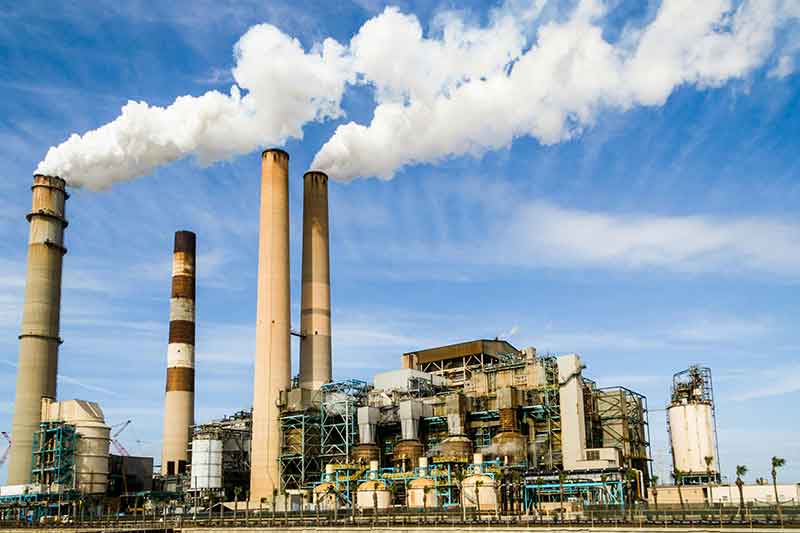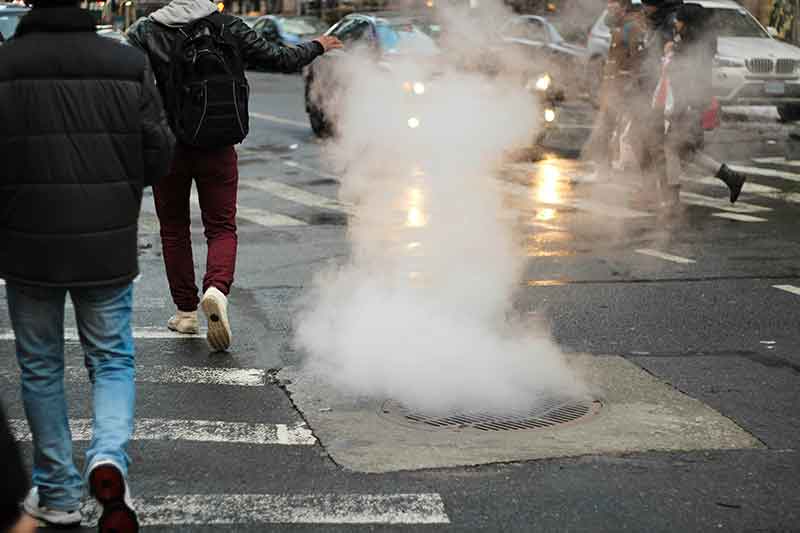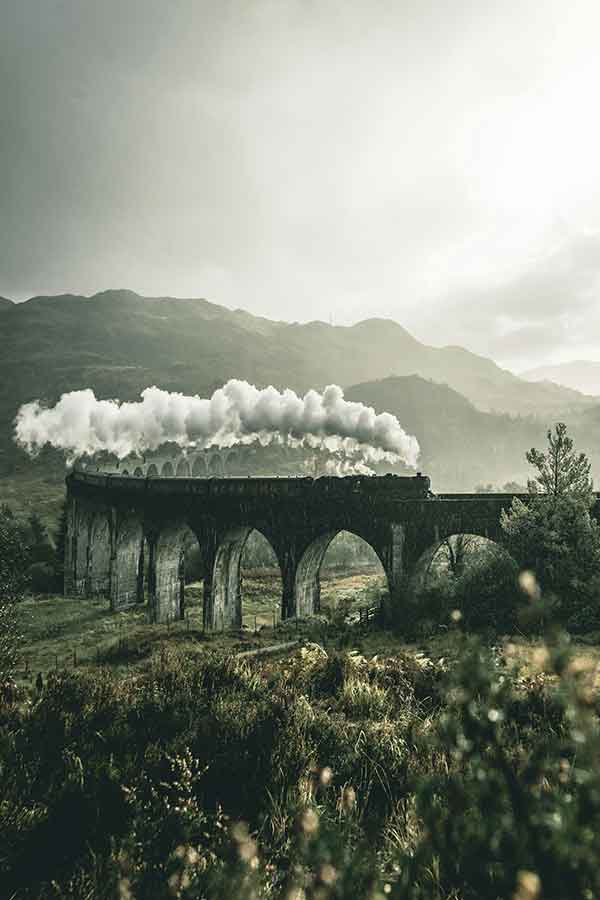The Physics of Commercial Steam Boilers and the Use of Steam to Generate Heat and Power
Steam boilers like those manufactured at McKenna Boiler Works, the Los Angeles boiler company) have long been integral to industrial processes, providing the necessary energy for heating, power generation, and a multitude of applications. The physics underlying the operation of commercial steam boilers is crucial to understanding how these systems efficiently convert water into steam and use that steam to generate heat and power. This comprehensive guide explores the thermodynamic principles, design considerations, and practical applications of steam boilers in the industrial world.

Boiler steam at factory Los Angeles
- Introduction to Steam Boilers
A steam boiler is a closed vessel in which water is heated to generate steam. This steam can then be used for various purposes, including heating, driving turbines, and powering machinery. The basic operation of a steam boiler involves burning a fuel source to heat water, creating steam under pressure. The energy in the steam is then harnessed for practical use.
1.1 Historical Context
The concept of using steam for mechanical work dates back to ancient times, but it was during the Industrial Revolution that steam boilers became essential. Early steam engines, such as those developed by Thomas Newcomen and James Watt, laid the foundation for modern steam boilers. These engines used steam to drive pistons and perform mechanical work, revolutionizing industries like textiles, mining, and transportation.
As industries expanded, the demand for more efficient and powerful steam boilers grew. This led to the development of various boiler designs and fuel sources, each optimized for different industrial needs. Today, commercial steam boilers are ubiquitous in industries ranging from power generation to food processing, each utilizing the principles of thermodynamics to convert water into energy.
- Thermodynamic Principles of Steam Boilers
Understanding the physics of steam boilers requires a deep dive into the thermodynamic principles that govern their operation. These principles include the laws of thermodynamics, heat transfer, and phase change, all of which are essential to the efficient production and use of steam.
2.1 The Laws of Thermodynamics
The operation of a steam boiler is fundamentally governed by the laws of thermodynamics:
- First Law of Thermodynamics (Conservation of Energy): This law states that energy cannot be created or destroyed, only transformed from one form to another. In a steam boiler, the chemical energy in the fuel is converted into thermal energy (heat), which is then used to produce steam. The energy balance equation for a boiler can be written as:
Qin=ΔU+Wout+QoutQ_{\text{in}} = \Delta U + W_{\text{out}} + Q_{\text{out}}Qin=ΔU+Wout+Qout
where QinQ_{\text{in}}Qin is the heat input from fuel combustion, ΔU\Delta UΔU is the change in internal energy of the water/steam, WoutW_{\text{out}}Wout is the work done by the steam (such as driving a turbine), and QoutQ_{\text{out}}Qout is the heat lost to the surroundings.
- Second Law of Thermodynamics (Entropy Increase): This law states that the total entropy of an isolated system can never decrease over time, and it governs the direction of energy transfer. In the context of steam boilers, it means that heat will naturally flow from the hot combustion gases to the cooler water, causing the water to heat up and eventually turn into steam.

Steam from coffee cup
2.2 Phase Change and Latent Heat
The conversion of water into steam in a boiler involves a phase change from the liquid phase to the vapor phase. This process requires the absorption of heat without a corresponding rise in temperature, known as latent heat. The latent heat of vaporization is the amount of heat required to convert a unit mass of water at its boiling point into steam without any temperature change.
For water at atmospheric pressure, the latent heat of vaporization is approximately 2,260 kJ/kg. In a boiler, the water is heated to its boiling point, after which additional heat (the latent heat) is supplied to convert the water into steam. This phase change is crucial for the operation of steam boilers, as it allows the boiler to store large amounts of energy in the form of steam.
2.3 Heat Transfer Mechanisms
Heat transfer is a fundamental aspect of steam boiler operation, as it determines the efficiency with which heat from the fuel is transferred to the water. There are three primary modes of heat transfer:
- Conduction: Heat transfer through a solid material, such as the metal walls of the boiler tubes. The rate of heat conduction depends on the thermal conductivity of the material and the temperature gradient across it.
- Convection: Heat transfer between a solid surface and a fluid (liquid or gas). In a boiler, convection occurs between the hot combustion gases and the water inside the tubes. The rate of convective heat transfer depends on the properties of the fluid and the flow conditions.
- Radiation: Heat transfer in the form of electromagnetic waves, which occurs between the hot combustion gases and the boiler surfaces. Radiation becomes significant at high temperatures, particularly in the furnace section of the boiler.

Steam from boiler underground escaping
2.4 Boiler Efficiency
The efficiency of a steam boiler is a measure of how effectively it converts the energy in the fuel into usable steam. Boiler efficiency can be defined as:
Boiler Efficiency=Heat Output in SteamHeat Input from Fuel×100%\text{Boiler Efficiency} = \frac{\text{Heat Output in Steam}}{\text{Heat Input from Fuel}} \times 100\%Boiler Efficiency=Heat Input from FuelHeat Output in Steam×100%
Factors that affect boiler efficiency include:
- Heat Losses: Heat can be lost through the boiler walls, flue gases, and incomplete combustion of fuel. Minimizing these losses is key to improving efficiency.
- Excess Air: While some excess air is necessary for complete combustion, too much excess air can lower efficiency by carrying heat away in the flue gases.
- Blowdown: Regular blowdown is necessary to control the concentration of dissolved solids in the boiler water, but excessive blowdown can waste energy.
Boiler efficiency is typically improved through careful design, proper maintenance, and optimizing the combustion process.
- Types of Commercial Steam Boilers
Commercial steam boilers come in various designs, each suited to different applications and operational requirements. The choice of boiler type depends on factors such as the required steam capacity, pressure, fuel type, and space constraints.

Industrial boiler generating power in locomotive
3.1 Fire-Tube Boilers
Fire-tube boilers are one of the oldest and most common types of boilers. In a fire-tube boiler, hot gases produced by the combustion of fuel pass through tubes that are immersed in water. The heat from the gases is transferred to the water, generating steam.
- Design: Fire-tube boilers consist of a cylindrical shell filled with water, with several tubes running through it. The hot gases pass through the tubes, heating the water in the shell. The steam generated rises to the top of the shell and is collected in a steam drum.
- Advantages: Fire-tube boilers are relatively simple in design, easy to operate, and have a high tolerance for variations in fuel type and quality. They are suitable for small to medium-sized applications where steam demand is relatively stable.
- Limitations: Fire-tube boilers have a limited steam capacity and pressure range, making them less suitable for large-scale industrial applications. They also have a slower response time to changes in steam demand.
3.2 Water-Tube Boilers
Water-tube boilers are more advanced and are commonly used in large-scale industrial applications. In a water-tube boiler, water flows through tubes that are heated externally by the combustion gases.
- Design: Water-tube boilers consist of a series of tubes connected to a steam drum and a mud drum. The tubes are arranged in various configurations, such as straight, bent, or spiral, depending on the specific design. The combustion gases flow around the outside of the tubes, transferring heat to the water inside.
- Advantages: Water-tube boilers can generate steam at much higher pressures and temperatures than fire-tube boilers, making them suitable for power generation and other high-demand applications. They also have a faster response time and are more efficient at transferring heat.
- Limitations: Water-tube boilers are more complex in design, requiring more sophisticated controls and maintenance. They are also more expensive to manufacture and install.
3.3 Electric Boilers
Electric boilers use electrical energy to heat water and generate steam. They are often used in applications where a clean and quiet source of steam is required.
- Design: Electric boilers consist of a vessel containing water, with electrical heating elements immersed in the water. The heating elements convert electrical energy into heat, raising the temperature of the water and producing steam.
- Advantages: Electric boilers produce no emissions and are relatively simple to operate and maintain. They are ideal for applications where fuel combustion is not feasible or where stringent emissions regulations are in place.
- Limitations: The primary limitation of electric boilers is the cost of electricity, which can be significantly higher than other fuel sources. They are also limited in steam capacity and pressure.
3.4 Condensing Boilers
Condensing boilers are designed to improve energy efficiency by recovering heat from the flue gases. They are commonly used in heating applications where maximizing efficiency is a priority.
- Design: Condensing boilers use a heat exchanger to capture heat from the flue gases, which would otherwise be lost to the environment. The captured heat is used to preheat the feedwater, reducing the amount of fuel needed to generate steam.
- Advantages: Condensing boilers can achieve efficiencies of over 90%, making them one of the most energy-efficient options available. They also produce lower emissions due to reduced fuel consumption.
- Limitations: Condensing boilers are more complex and expensive than non-condensing models. They also require proper drainage for the condensate produced during operation.
3.5 Combination Boilers
Combination boilers, also known as combi boilers, are versatile units that provide both steam and hot water. They are commonly used in smaller commercial applications where space and budget constraints exist.
- Design: Combination boilers combine the functions of a boiler and a water heater in a single unit. They typically have a heat exchanger that heats water for both steam generation and hot water supply.
- Advantages: Combination boilers are compact and space-saving, making them ideal for small commercial spaces. They also offer convenience by providing both steam and hot water from a single unit.
- Limitations: The steam capacity of combination boilers is limited, and they may not be suitable for larger applications with high steam demand.
- The Role of Steam in Power Generation and Heating
Steam is a versatile and powerful medium for both power generation and heating. The physics of steam, including its ability to store large amounts of energy and its capacity to expand, make it an ideal choice for various industrial applications.
4.1 Steam in Power Generation
Steam turbines are one of the most common methods of generating electricity in large-scale power plants. The basic principle involves using high-pressure steam to drive a turbine, which in turn drives a generator to produce electricity.
- Rankine Cycle: The Rankine cycle is the thermodynamic cycle used in steam power plants. It involves four main processes:
- Isentropic Expansion: High-pressure steam from the boiler expands through the turbine, doing work on the blades and generating electricity.
- Isobaric Heat Rejection: The steam is then condensed back into water in a condenser, releasing heat to the surroundings.
- Isentropic Compression: The condensed water is pumped back to the boiler at high pressure.
- Isobaric Heat Addition: The water is heated in the boiler to produce steam, completing the cycle.
- Efficiency Considerations: The efficiency of a steam power plant is influenced by the temperature and pressure of the steam, the design of the turbine, and the effectiveness of the condenser. Superheating the steam (raising its temperature above the saturation point) can improve efficiency by reducing the moisture content in the turbine.
4.2 Steam in Industrial Heating
Steam is widely used in industrial heating applications, such as process heating, space heating, and district heating. The ability of steam to transfer heat efficiently makes it ideal for a range of heating tasks.
- Process Heating: Steam is used to heat raw materials, reactors, and other equipment in industries such as chemical manufacturing, food processing, and pharmaceuticals. The precise control of steam temperature and pressure allows for consistent and reliable heating.
- Space Heating: In commercial and industrial buildings, steam is used for space heating through radiators, convectors, and air handling units. Steam provides uniform heat distribution and can be easily controlled to maintain comfortable indoor conditions.
- District Heating: Steam is also used in district heating systems, where a central plant generates steam and distributes it through a network of pipes to heat multiple buildings. This approach is energy-efficient and reduces the need for individual heating systems in each building.
4.3 Advantages of Steam for Heating and Power Generation
- High Energy Density: Steam has a high energy density, meaning it can carry large amounts of energy in a relatively small volume. This makes it efficient for both heating and power generation.
- Ease of Transport: Steam can be easily transported through pipes over long distances, making it ideal for district heating and industrial processes.
- Control and Flexibility: Steam systems offer precise control over temperature and pressure, allowing for consistent and reliable operation in a variety of applications.
- Renewability: Steam can be generated using renewable energy sources, such as biomass or solar energy, reducing the environmental impact of power generation and heating.
- Design Considerations for Commercial Steam Boilers
The design of commercial steam boilers involves a careful balance of performance, efficiency, and safety. Engineers must consider a range of factors, including the type of fuel, steam demand, operating pressure, and environmental regulations.
5.1 Fuel Selection
The choice of fuel is one of the most important considerations in boiler design. Common fuels include:
- Natural Gas: Widely used due to its availability, clean combustion, and relatively low cost. Natural gas boilers are efficient and produce fewer emissions than other fossil fuels.
- Oil: Used in areas where natural gas is not available. Oil boilers are typically less efficient and produce higher emissions, but they offer a reliable source of heat.
- Coal: Traditionally used in large power plants, coal is a cost-effective but environmentally challenging fuel due to its high carbon emissions.
- Biomass: An increasingly popular renewable fuel, biomass boilers use organic materials like wood chips, agricultural waste, and pellets. Biomass boilers are carbon-neutral, but they require specialized handling and storage.
5.2 Steam Demand and Pressure
The steam demand and pressure requirements of the application determine the size and design of the boiler. Key considerations include:
- Steam Capacity: The boiler must be sized to meet the peak steam demand of the facility, with a margin of safety to account for fluctuations in demand.
- Operating Pressure: The pressure at which the boiler operates affects the design of the pressure vessel, piping, and safety systems. Higher pressures require thicker materials and more robust safety features.
5.3 Heat Recovery and Efficiency
Improving the efficiency of steam boilers involves recovering as much heat as possible from the combustion process. This can be achieved through:
- Economizers: Heat exchangers that recover heat from the flue gases to preheat the feedwater, improving overall efficiency.
- Condensing Boilers: As mentioned earlier, condensing boilers recover heat from the flue gases by condensing the water vapor, significantly improving efficiency.
- Combined Heat and Power (CHP): CHP systems generate both electricity and useful heat from the same fuel source, maximizing energy utilization.
5.4 Environmental Considerations
Environmental regulations play a significant role in boiler design, particularly regarding emissions and waste disposal. Key factors include:
- NOx and SOx Emissions: Boilers must be designed to minimize emissions of nitrogen oxides (NOx) and sulfur oxides (SOx), which contribute to air pollution and acid rain. This may involve using low-NOx burners, flue gas recirculation, or selective catalytic reduction (SCR) systems.
- Particulate Matter: Boilers burning solid fuels, such as coal or biomass, must be equipped with systems to capture particulate matter (PM) from the flue gases, such as electrostatic precipitators or baghouse filters.
- Water Treatment: Proper water treatment is essential to prevent scaling, corrosion, and fouling in the boiler and associated piping. Water treatment systems must be designed to meet environmental regulations for discharge and disposal.
5.5 Safety Considerations
Safety is paramount in the design and operation of steam boilers. Key safety features include:
- Pressure Relief Valves: These valves automatically release steam if the pressure exceeds safe limits, preventing catastrophic failures.
- Low-Water Cutoff: A safety device that shuts down the boiler if the water level falls below a safe level, preventing damage to the boiler.
- Flame Safeguard: A system that monitors the burner flame and shuts off the fuel supply if the flame is extinguished, preventing the buildup of unburned fuel.
- Advances in Steam Boiler Technology
The field of steam boiler technology is constantly evolving, with innovations aimed at improving efficiency, reducing emissions, and enhancing safety.
6.1 Advanced Control Systems
Modern steam boilers are equipped with sophisticated control systems that optimize performance and efficiency. These systems use sensors, algorithms, and real-time data to adjust fuel input, air flow, and steam output, ensuring optimal operation under varying conditions.
6.2 Supercritical and Ultra-Supercritical Boilers
Supercritical and ultra-supercritical boilers operate at pressures and temperatures above the critical point of water, where there is no distinction between liquid and vapor phases. These boilers achieve higher efficiencies than conventional boilers by reducing the energy losses associated with phase change.
6.3 Integration with Renewable Energy Sources
The integration of steam boilers with renewable energy sources, such as solar thermal or biomass, is an area of growing interest. Hybrid systems that combine traditional fossil fuels with renewables can reduce carbon emissions and improve sustainability.
6.4 Additive Manufacturing
Additive manufacturing, or 3D printing, is being explored for the production of boiler components, such as burners and heat exchangers. This technology allows for the creation of complex geometries and customized designs that can improve performance and efficiency.
- Conclusion
The physics of commercial steam boilers encompasses a wide range of thermodynamic principles, design considerations, and practical applications. Understanding how these systems work is essential for optimizing their performance, ensuring safety, and meeting the energy demands of modern industries. As technology continues to advance, steam boilers will remain a critical component of power generation, heating, and industrial processes, adapting to new challenges and opportunities in a rapidly changing world.

